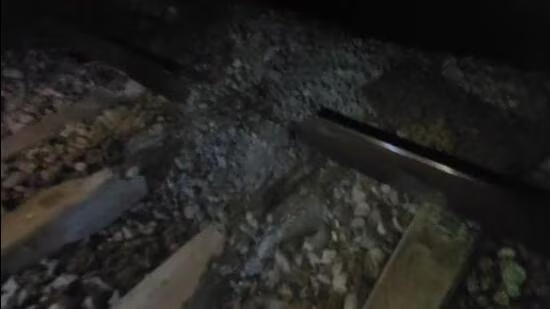Kokrajhar IED Blast: Northeast Rail Security Gets Army’s Counter-Insurgency Overhaul
At 1:00 AM on October 23, 2025, the silence of Assam’s Bodoland Territorial Region was shattered. An improvised explosive device (IED) detonated between Kokrajhar and Salakati railway stations, ripping through tracks and scattering shrapnel across 10 feet of critical infrastructure. No casualties — but the message was loud: insurgent groups are testing the fragile peace of the BTR Peace Accord.
Within hours, Chief Minister Himanta Biswa Sarma declared: “The mastermind has been identified. Arrest is imminent.” The Army responded with a sweeping overhaul of Northeast rail security — integrating AI analytics, drone swarms, and rapid reaction forces across 500 km of vulnerable rail corridors.
The Incident: A Near Disaster Averted
The UP AZARA Sugar goods train was en route when the loco pilot felt a violent jerk. Emergency brakes halted the train just meters from catastrophe. Inspection revealed two blast craters, splintered sleepers, and buckled rails. Services across Lower Assam and North Bengal were suspended for five hours — stranding thousands and delaying ₹15 crore in freight.
Investigators linked the device to NSLA militant Ipil Murmu (alias Rohit), killed two days later in a Salakati encounter. His Jharkhand Maoist training and access to RDX pointed to a dangerous convergence of separatist and Left-wing extremist tactics.
Resurgent Threats in BTR
The 2020 BTR Peace Accord ended decades of NDFB violence, reducing insurgency by 70%. But ULFA-I and splinter groups like NSLA continue to exploit grievances — land rights, unemployment (15% in BTR), and political marginalization. The blast came days after ULFA-I attacked a Tinsukia Army camp, repelled with minimal damage.
Railways are soft targets. Northeast Frontier Railway (NFR) transports ₹50,000 crore in goods annually — tea, oil, timber, and military supplies. A single disruption cascades across the region’s economy and logistics chain supporting forward troops along the China border.
Army’s Multi-Layered Response
The Eastern Command activated Operation Rail Shield 2.0 within 12 hours:
- 200% increase in rail patrols: 50 Quick Reaction Teams (QRTs) deployed
- Drone surveillance grid: Nagastra-1 variants scanning 24/7
- AI threat prediction: DTU-developed analytics flag high-risk zones
- K9 and jammer units: Countering electronic and explosive triggers
The Army-DTU MoU, signed in October 2025, now powers real-time IED pattern recognition. Machine learning models analyze historical blast data, terrain, and social media chatter to predict sabotage sites with 85% accuracy.
Integration with Broader Defence Layers
Rail security is now linked to Project Kusha — DRDO’s long-range air defence system nearing DAC approval. Overhead drone threats will be neutralized by 250–350 km SAM intercepts, while ground-level IEDs are handled by QRTs and AI.
CRPF and Assam Police have launched Operation All Out 2.0 targeting ULFA-I cadres in upper Assam. Community intelligence networks — 300+ village defence parties — feed real-time tips into a unified command center in Guwahati.
Economic and Strategic Stakes
NFR is more than infrastructure — it’s a lifeline. A week-long disruption could cost ₹500 crore and delay troop rotations along the LAC. The Kokrajhar blast exposed vulnerabilities in India’s eastern logistics spine, critical for rapid mobilization against China.
The BTR Peace Accord allocated ₹1,500 crore for development. Yet, youth unemployment and poor education outcomes (Kokrajhar ranked low in 2025 Gunotsav) fuel recruitment. The blast was not just tactical — it was a political statement ahead of BTC elections.
Path to Resilience
By 2027, the Army aims for a Northeast Rail Security Grid:
- AI-powered perimeter fencing with vibration sensors
- Drone highways for persistent surveillance
- Community vigilante integration via mobile apps
- 90% threat mitigation through predictive policing
CM Sarma’s vision: “Peace is not the absence of conflict — it is the presence of justice and opportunity.” The Kokrajhar blast was a warning. India’s response is a blueprint: technology, intelligence, and development must converge to secure the Northeast.
The tracks are repaired. The trains are running. But the message endures: India will not allow its lifelines to be severed.



